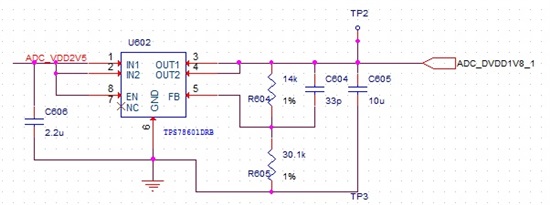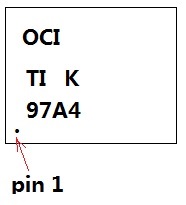Hi,
I am using TPS78601DRB to power two LTC2158 ADC. The input is 2.5V and output is 1.8V.
The output is connected to the ADC through ferrite beads. When the ferrite beads are on, the output is 1.71V, and the voltage of FB pin is about 1.17V, not 1.2246V as in the datasheet. When the beads are removed, the output is zero.
I use the right E96 14k and 30.1k resisters right as told in the datasheet.
I have two modules with the same problem, except the output is not 1.71, but definitely not 1.8V.
What might be the problem?
Thanks
Chao Xiang



